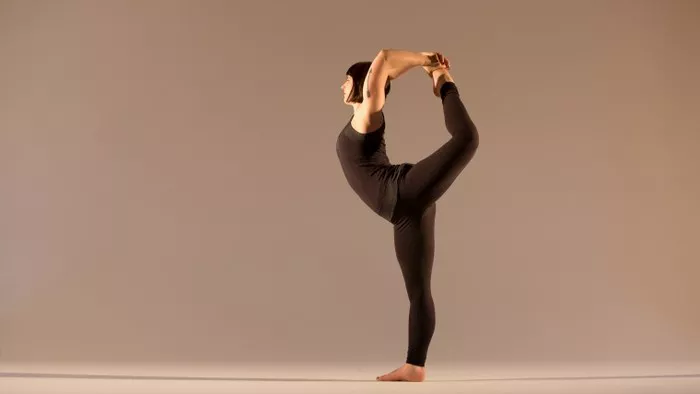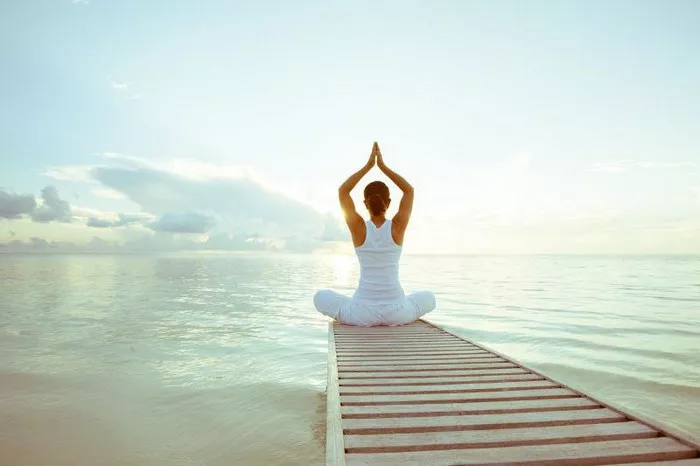Yoga, dating back thousands of years, originated in ancient India as a holistic approach to harmonizing the body, mind, and spirit. Over time, different styles and schools of yoga emerged, each emphasizing specific aspects of the practice. While yoga is often associated with gentle stretches and meditative poses, it also encompasses advanced postures that demand strength, flexibility, and intense concentration.
As yoga gained popularity globally, the challenge of mastering difficult poses became a source of fascination for practitioners seeking to deepen their practice. Yogis began experimenting with complex postures, pushing the boundaries of what the human body could achieve. This evolution led to the identification of the most difficult yoga pose – a pinnacle of physical and mental prowess.
The Mythical Essence: Natarajasana, The King Dancer Pose
Among the myriad challenging yoga poses, Natarajasana, or the King Dancer Pose, stands out as a symbol of grace, strength, and balance. Named after Nataraja, the cosmic dancer and lord of the dance in Hindu mythology, this pose embodies the fusion of artistry and athleticism.
Natarajasana requires a combination of flexibility, strength, and mindfulness, making it a formidable challenge even for seasoned yogis. The pose is characterized by standing on one leg, extending the other leg backward, and simultaneously reaching for the raised foot with the hand on the same side. The extended leg is lifted while the upper body arches backward, creating a shape reminiscent of a dancer in mid-performance.
Unlocking the Benefits: Physical and Mental Rewards of Natarajasana
While mastering Natarajasana may seem like a daunting task, the benefits it offers are both physical and mental. Understanding and persisting through the challenges of this pose can lead to a transformative yoga experience.
Physically, Natarajasana targets multiple muscle groups, including the quadriceps, hamstrings, calves, and core. The pose enhances flexibility in the spine, shoulders, and hips while strengthening the legs and ankles. Regular practice of Natarajasana can contribute to improved posture, increased stamina, and heightened body awareness.
On a mental level, Natarajasana demands unwavering focus and concentration. The intricate balance required to hold the pose cultivates mindfulness, promoting a sense of calm and clarity. As practitioners navigate the complexities of the King Dancer Pose, they develop resilience, patience, and mental fortitude – qualities that extend beyond the yoga mat into everyday life.
Breaking Down the Pose: Key Techniques and Alignment Principles
Achieving Natarajasana involves mastering a series of key techniques and adhering to precise alignment principles. Breaking down the pose into its essential components can guide practitioners on their journey to mastering this challenging asana.
1. Foundation and Balance:
- Begin in Tadasana (Mountain Pose) with feet hip-width apart.
- Shift your weight onto the left leg, engaging the muscles of the standing leg for stability.
- Ground through the four corners of the left foot to establish a strong foundation.
2. Lifting the Leg:
- Bend the right knee, bringing the heel toward the buttocks.
- Reach back with the right hand and grasp the inner ankle or outer edge of the foot.
- Initiate the lift of the right foot while maintaining a firm grip.
3. Extension and Arching:
- As the right foot lifts, simultaneously extend the left arm forward, parallel to the ground.
- Begin to hinge at the hips, tilting the torso forward while lifting the right leg higher.
- Arch the upper body backward, creating a gentle curve through the spine.
4. Gaze and Drishti:
- Fix your gaze on a focal point or drishti to enhance concentration and balance.
- The drishti can be a point on the floor or a specific spot in the distance, aiding in maintaining focus.
5. Breath Awareness:
- Maintain steady and controlled breathing throughout the pose.
- Deep, rhythmic breaths help calm the mind and sustain the posture.
Common Challenges and Modifications: Overcoming Obstacles on the Mat
As with any advanced yoga pose, practitioners often encounter challenges while attempting Natarajasana. Understanding these common obstacles and exploring modifications can facilitate progress and prevent injury.
1. Limited Flexibility:
- Tightness in the quadriceps or hip flexors can impede the extension of the lifted leg.
- Prioritize regular stretching and flexibility exercises to gradually increase range of motion.
2. Weak Core Muscles:
- A weak core may result in difficulty maintaining balance and stability.
- Incorporate core-strengthening exercises into your yoga routine, such as plank variations and boat pose.
3. Unstable Ankles:
- Weak ankles may compromise balance during the pose.
- Practice ankle-strengthening exercises and consider using a prop, such as a yoga block, for added stability.
4. Fear of Falling:
- Fear and anxiety about falling can hinder the ability to fully engage in the pose.
- Practice near a wall for support or use a yoga strap to assist in reaching the foot, gradually building confidence.
Embarking on the Journey: Tips for Mastering Natarajasana
Successfully mastering Natarajasana requires patience, dedication, and a willingness to embrace the learning process. Here are some tips to guide practitioners on their journey to conquering the King Dancer Pose:
1. Consistent Practice:
- Include Natarajasana in your regular yoga practice, dedicating time to refine and progress in the pose.
- Consistency is key to building the strength and flexibility required for this challenging asana.
2. Mindful Progression:
- Break down the pose into stages, focusing on individual components before attempting the full expression.
- Gradual progression allows the body to adapt and minimizes the risk of injury.
3. Use Props Wisely:
- Props, such as yoga blocks or a wall, can provide support and aid in maintaining proper alignment.
- Incorporate props as needed, gradually reducing reliance as your strength and balance improve.
4. Listen to Your Body:
- Pay attention to signals of discomfort or pain.
- Honour your body’s limitations and avoid pushing too hard, especially if you are a beginner or dealing with injuries.
5. Seek Guidance:
- Consider attending classes led by experienced yoga instructors who can provide personalized guidance and adjustments.
- Workshops or one-on-one sessions can offer valuable insights into refining your Natarajasana practice.
The Journey Beyond the Mat: Integrating Natarajasana into Daily Life
As practitioners progress in mastering Natarajasana, the lessons learned on the yoga mat extend into everyday life. The qualities cultivated during the pursuit of this challenging pose – resilience, focus, and balance – become invaluable tools for navigating the complexities of the modern world.
1. Resilience in Adversity:
- The challenges faced while mastering Natarajasana mirror the obstacles encountered in life.
- Resilience, developed through persistent practice, becomes a guiding force in overcoming difficulties with grace and composure.
2. Mindful Decision-Making:
- The concentration required in Natarajasana fosters mindfulness and present-moment awareness.
- These qualities translate into improved decision-making and a heightened ability to navigate life’s choices with clarity.
3. Balancing Act:
- Achieving balance in Natarajasana mirrors the delicate equilibrium required in daily life.
- The ability to balance priorities, responsibilities, and self-care becomes a natural extension of the yoga practice.
Conclusion
In the realm of challenging yoga poses, Natarajasana stands as a testament to the marriage of physical prowess and spiritual grace. While mastering the King Dancer Pose may seem daunting, the rewards extend far beyond the physical realm. As practitioners embark on the journey of Natarajasana, they discover not only the depths of their own strength and flexibility but also the transformative power of yoga to enrich the mind, body, and soul. Embrace the challenge, and let the journey unfold – for in the pursuit of the most difficult yoga pose lies a profound exploration of self-discovery and personal growth.























